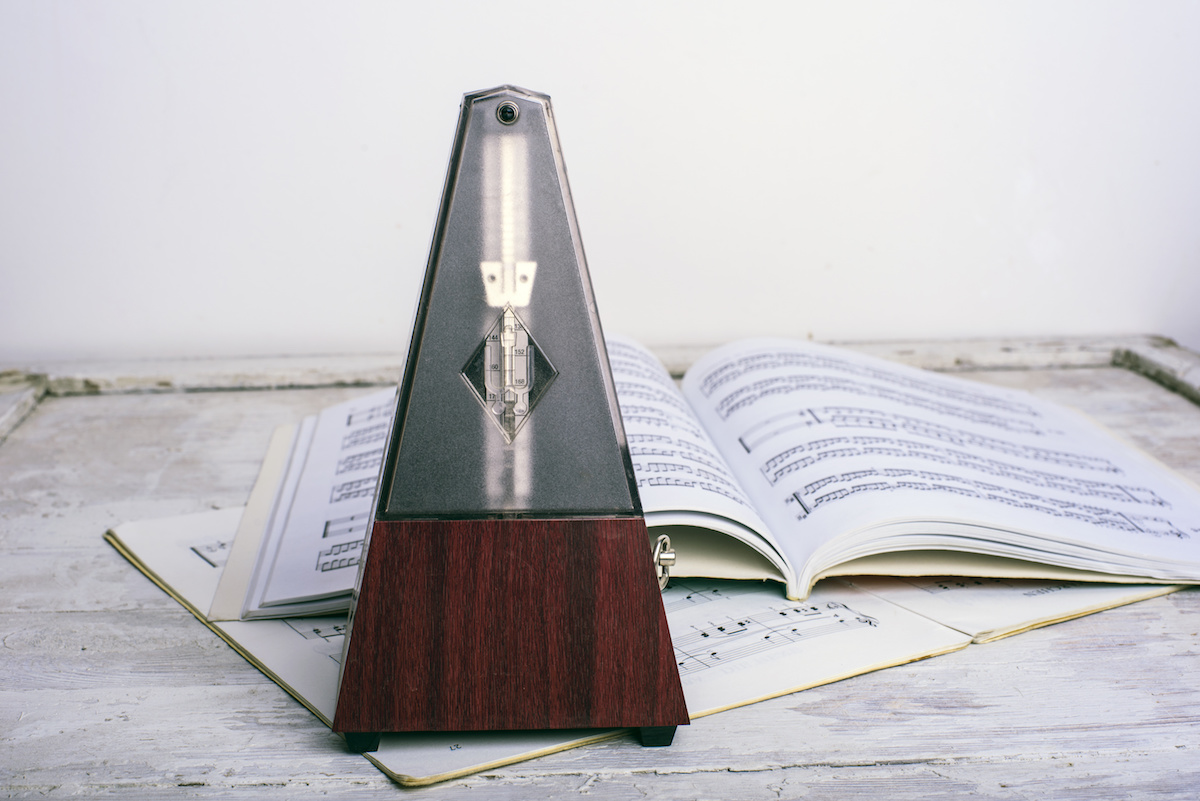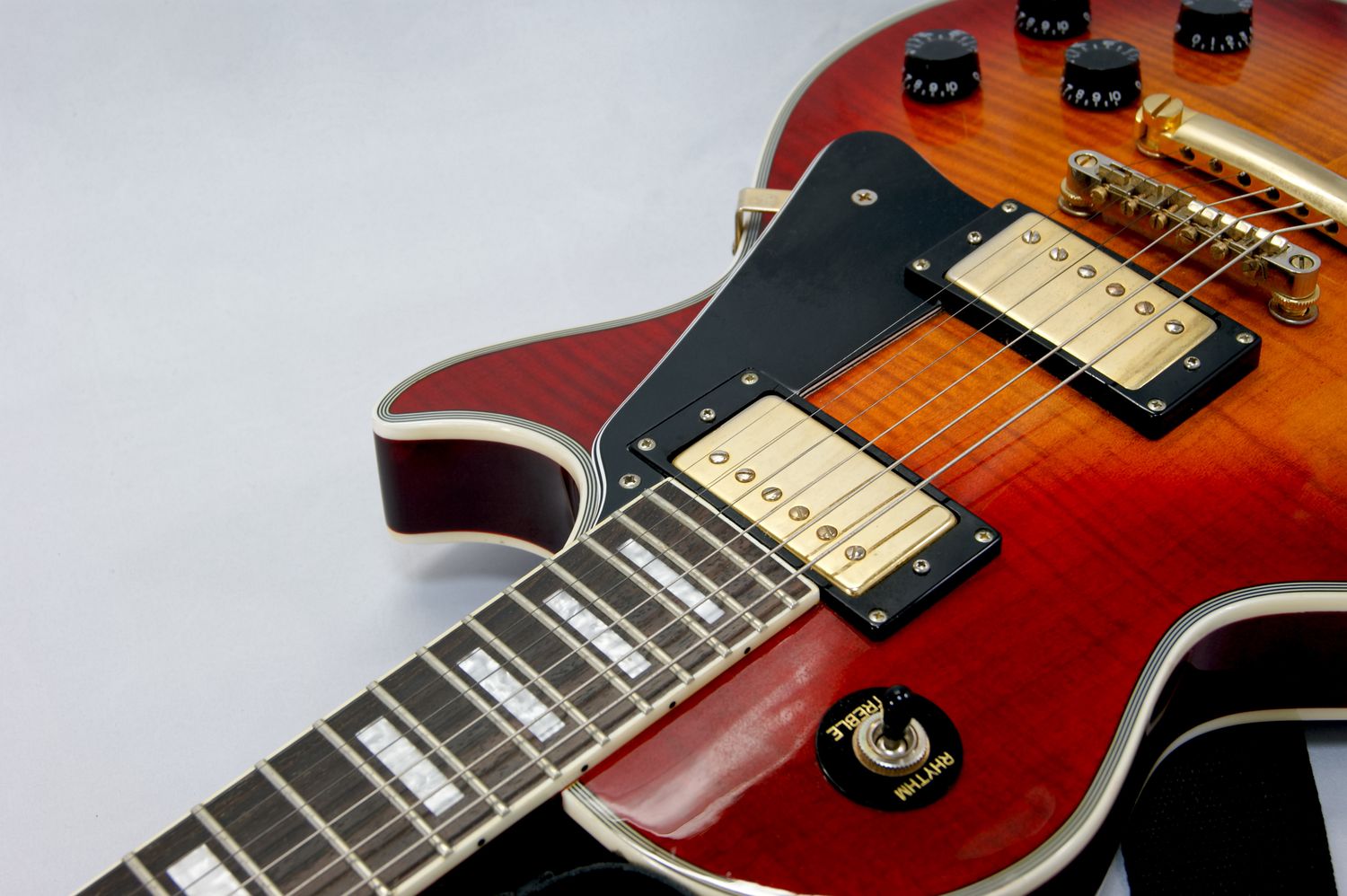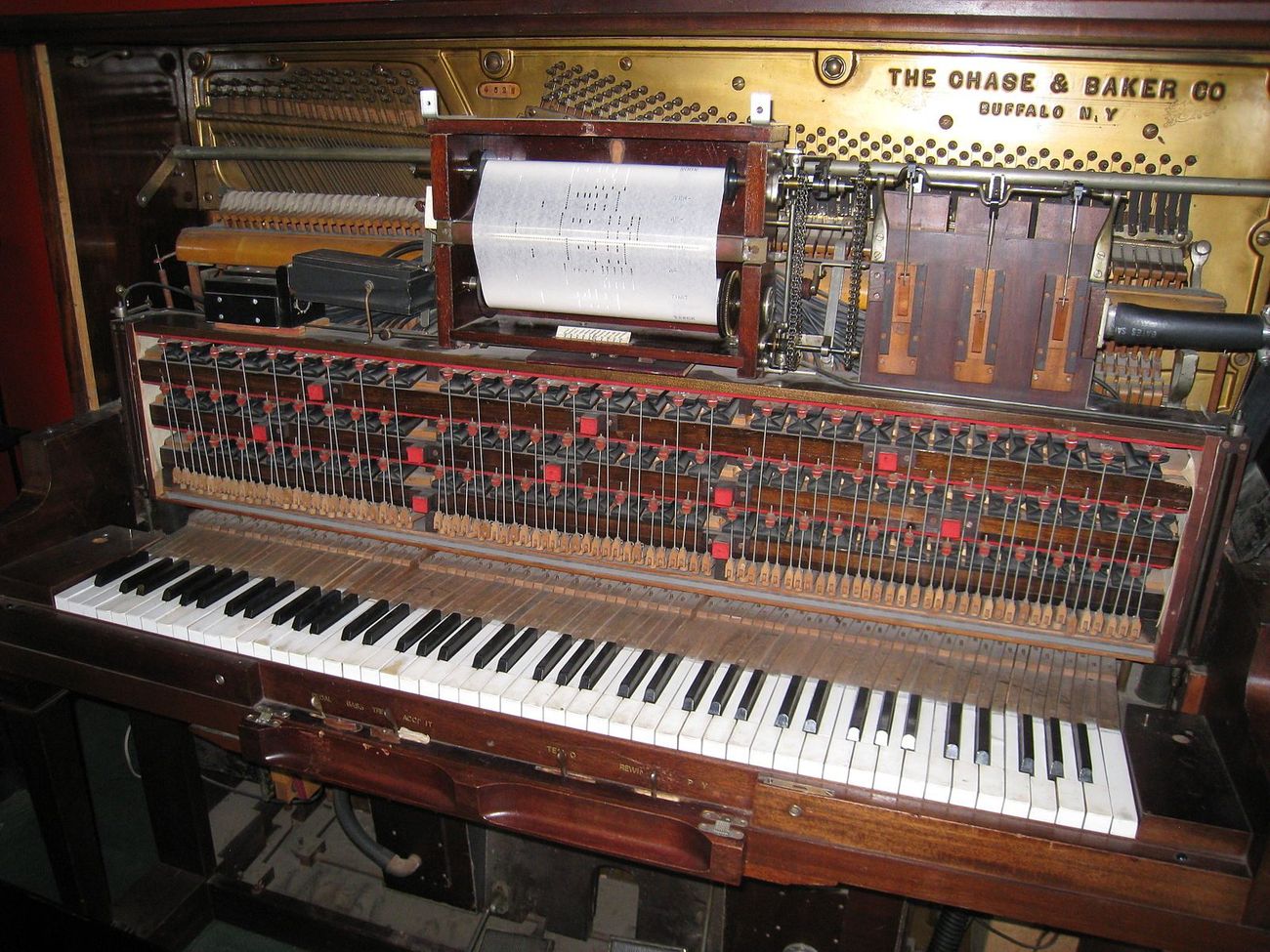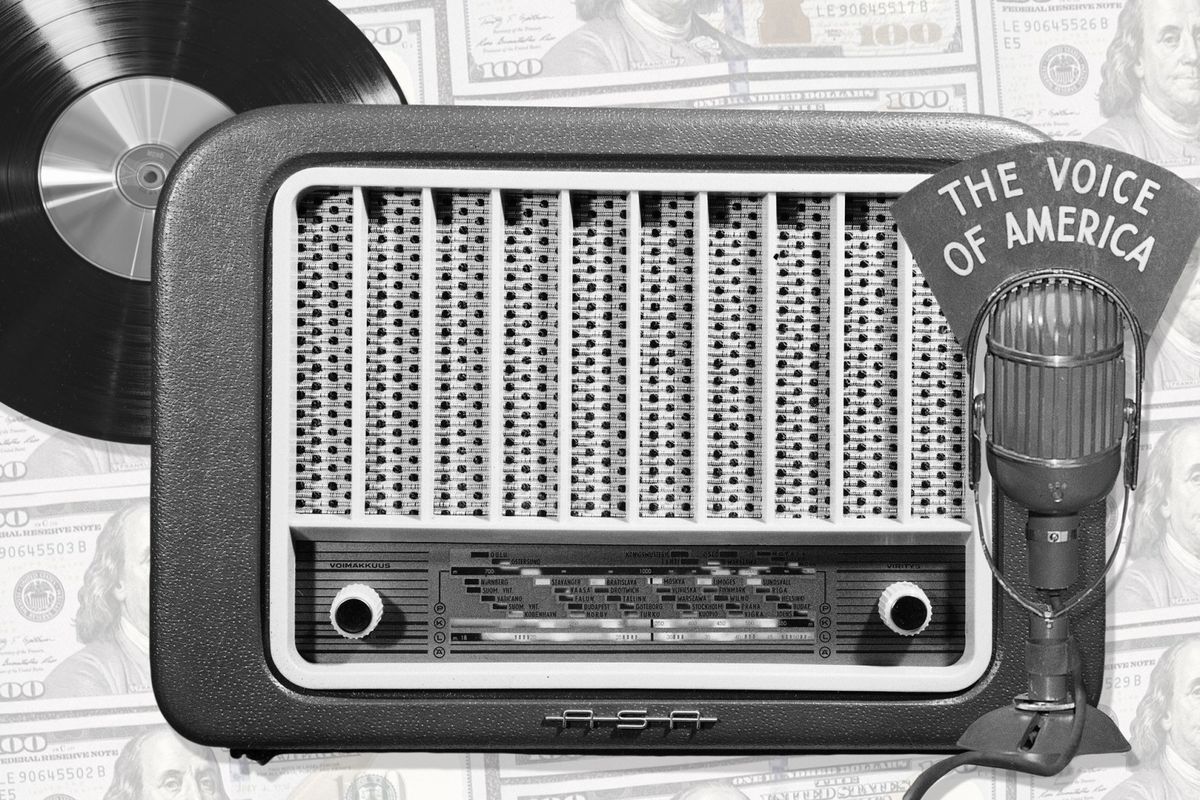Home>Production & Technology>Metronome>How Does A Metronome Work?


Metronome
How Does A Metronome Work?
Published: January 13, 2024
Discover how a metronome works and keeps you on beat. From tempo regulation to rhythm training, understand how this essential music tool helps with precision and timing.
(Many of the links in this article redirect to a specific reviewed product. Your purchase of these products through affiliate links helps to generate commission for AudioLover.com, at no extra cost. Learn more)
Table of Contents
Introduction
Have you ever wondered how musicians maintain perfect rhythm during a performance? One indispensable tool that aids in this process is the metronome. Whether you’re a musician, a music student, or simply enjoy playing an instrument as a hobby, understanding how a metronome works can greatly enhance your musical experience.
A metronome is a device that produces a regular, steady beat to help musicians keep time. It acts as a musical timekeeper, providing a constant rhythm reference for practicing and performing various musical pieces. Whether you’re playing classical music, jazz, rock, or any other genre, a metronome can be an invaluable tool in maintaining precision and consistency.
In this article, we will explore the inner workings of a metronome, examining the purpose and function of this essential musical accessory. We’ll delve into the different components of a metronome, both mechanical and electronic, and explore how they work together to create the rhythmic beats that guide musicians.
We will also discuss how to use a metronome effectively and highlight the advantages and benefits of incorporating it into your practice routine. Additionally, we will address common misconceptions about metronomes, debunking any myths that may exist about their usefulness or limitations.
By the end of this article, you will have a comprehensive understanding of how a metronome functions and how it can enhance your musical abilities. Whether you’re a beginner learning to play your first instrument or a seasoned musician looking to refine your timing, the knowledge gained from this exploration will undoubtedly prove valuable.
So, let’s dive in and unravel the mysteries behind the rhythmic pulse of the metronome!
Definition of a Metronome
A metronome is a device used by musicians to keep time and maintain a consistent tempo while practicing or performing. It provides a steady and audible beat that serves as a reference point for musicians to synchronize their playing. The term “metronome” comes from the Greek words “metron,” meaning measure, and “nomos,” meaning law or rule.
Traditionally, metronomes were mechanical devices consisting of a weighted pendulum that swings back and forth, creating an audible tick-tock sound to indicate the beats per minute (BPM). However, modern metronomes can also be digital or electronic, offering additional features such as adjustable tempo, multiple sound options, and visual indicators.
At its core, a metronome’s primary function is to help musicians develop and maintain a sense of rhythm and timing. By providing a consistent beat, it establishes a musical framework that enables musicians to play with precision and coherence. Whether you’re a pianist, guitarist, drummer, or any other instrumentalist, using a metronome can greatly improve your ability to stay in time, avoid rushing or dragging, and play with a steady groove.
Metronomes are widely used in both music education and professional settings. In music schools and conservatories, instructors often incorporate metronome exercises and drills into their lessons to improve students’ timing and sense of rhythm. In the recording studio, metronomes are frequently used to help musicians stay in sync during recording sessions, ensuring the overall tightness and cohesiveness of a musical performance.
Furthermore, metronomes are not limited to instrumentalists. Vocalists, dancers, and actors can also benefit from using a metronome to develop a sense of timing and precision in their performances. By aligning their movements or vocal phrasing with the metronome’s beat, these artists can achieve a polished and synchronized delivery.
Overall, a metronome is an essential tool for any musician striving for rhythmic accuracy and consistency. It serves as a reliable guide, enabling musicians to control their tempo, refine their timing, and ultimately enhance their musical performance.
Purpose and Function of a Metronome
The purpose of a metronome is to provide a consistent and precise beat that serves as a reference for musicians to maintain tempo and rhythm in their music. It functions as a timekeeping tool, helping musicians develop a strong sense of timing and improve their overall performance. Here are some key functions and benefits of using a metronome:
1. Tempo Control: One of the primary functions of a metronome is to control the tempo, or speed, at which a piece of music is played. It allows musicians to set the desired beats per minute (BPM) and practice at a consistent tempo. This is particularly useful when learning new pieces or practicing difficult passages, as it helps to gradually build speed and accuracy.
2. Rhythm Development: By playing along with a metronome, musicians can develop a strong sense of rhythm. The metronome provides a steady beat that helps musicians internalize the rhythmic patterns and subdivisions of a piece. It improves their ability to stay in time, execute syncopated rhythms, and maintain a consistent groove.
3. Timing Accuracy: Precision in timing is crucial in music, and a metronome can greatly assist in developing accurate timing. It helps musicians avoid rushing or dragging certain passages and ensures a seamless and synchronized performance. Regular practice with a metronome trains the internal timing mechanism of musicians, making them more reliable and consistent in their playing.
4. Dynamic Control: Metronomes also offer the convenience of adjusting the volume and sound of the beats. This allows musicians to customize their practice sessions according to their preferences and the specific requirements of the music they are playing. Soft, medium, or loud beats can be selected to suit different musical contexts.
5. Subdivisions: Many metronomes have the ability to subdivide the beats, providing additional rhythmic accuracy. This is especially useful for complex time signatures or intricate rhythmic patterns where a regular beat alone may not suffice. Musicians can set the metronome to play subdivisions such as eighth notes, triplets, or even more intricate rhythms, allowing for greater precision and articulation.
6. Multifunctionality: With advancements in technology, digital metronomes offer an array of additional features. These may include different sounds and tones, visual indicators such as flashing lights or moving pendulum animations, and the ability to save and recall specific tempo settings. Some metronomes even incorporate rhythm patterns, allowing musicians to practice different styles and genres.
In summary, the purpose and function of a metronome revolve around providing musicians with a reliable timekeeping tool. It assists in controlling tempo, developing rhythm, improving timing accuracy, offering dynamic control, facilitating subdivisions, and providing additional features to enhance the overall musical experience. Incorporating the use of a metronome in practice sessions can significantly benefit musicians of all levels, improving their timing, precision, and overall musical performance.
Components of a Metronome
A metronome consists of several key components that work together to provide the necessary functionality and features. While the specific design and features may vary among different models, the following are the common components found in a metronome:
1. Housing: The housing of a metronome is the outer casing that encloses all the internal components. It can be made of various materials, including plastic, wood, or metal, and is designed to provide durability and stability to the device.
2. Tempo Dial or Display: The tempo dial or display is a central component of the metronome that allows users to set and adjust the desired tempo. It typically consists of a rotating dial or an electronic display with numbers representing beats per minute (BPM).
3. Pendulum or Digital Indicator: Mechanical metronomes usually incorporate a swinging pendulum as a visual indicator of the beats. The pendulum swings back and forth, marking each beat with a side-to-side motion. In electronic metronomes, a digital indicator, such as an LCD screen or light, replaces the pendulum to provide a visual representation of the beats.
4. Weight Adjustment: Some mechanical metronomes allow for weight adjustment on the pendulum. By moving the weight up or down the pendulum, the user can control the metronome’s tempo. Moving the weight towards the top of the pendulum speeds up the tempo, while moving it towards the bottom slows it down.
5. Sound Generator: The sound generator is responsible for producing the audible beats in a metronome. In mechanical metronomes, this is typically achieved using an internal mechanism that strikes a metal rod or plate, creating an audible tick-tock sound. Electronic metronomes, on the other hand, employ built-in speakers or audio output to generate various sounds, such as clicks, beeps, or even musical instrument sounds.
6. Power Source: For electronic metronomes, a power source is required to operate the device. This can be accomplished through batteries, an external power adapter, or rechargeable batteries. Some models may also offer the option of connecting to a computer or mobile device via USB for power or synchronization purposes.
7. Controls and Settings: Metronomes often feature additional controls and settings to customize the user experience. These can include volume control, tone selection, subdivisions, rhythm patterns, and even memory functions to save and recall specific tempo settings.
8. External Connections: In digital metronomes, there may be external connections, such as headphone jacks or audio output ports, allowing the user to connect headphones or external speakers for private or amplified listening.
Overall, the components of a metronome work harmoniously to provide users with a reliable tool for keeping time and maintaining rhythm. Whether it’s the housing that houses all the internal components, the tempo dial or display for setting the desired tempo, or the sound generator that produces the audible beats, each component plays a crucial role in enhancing the functionality and user experience of a metronome.
Mechanical Mechanism of a Metronome
The mechanical mechanism of a metronome relies on a series of interconnected components to create a steady and audible beat. While the precise design may vary among different models, the following are the fundamental elements that make up the mechanical mechanism of a metronome:
1. Pendulum: At the heart of a mechanical metronome is a weighted pendulum, typically attached to a horizontal rod. The pendulum swings back and forth in a consistent arc, serving as the visual and auditory indicator of the beats.
2. Weight Adjustment: Some mechanical metronomes allow for weight adjustment on the pendulum. By moving the weight up or down the pendulum shaft, the user can control the metronome’s tempo. Moving the weight higher increases the speed, while moving it lower slows it down.
3. Escapement Mechanism: The escapement mechanism is responsible for regulating the swinging motion of the pendulum. It features a gear system that allows the pendulum to swing freely and lock in place at regular intervals to create the distinct tick-tock sound.
4. Gear Train: The gear train is a series of interlocking gears that transmit the energy generated by the pendulum’s swing to other components of the metronome. It ensures that the motion of the pendulum is accurately translated into the movement of the indicator and sound-generating components.
5. Indicator: Mechanical metronomes typically incorporate a visual indicator, often in the form of a pendulum arm or sliding weight, that moves back and forth with the swinging motion of the pendulum. This provides a visual cue to musicians, allowing them to visualize the beats and maintain the desired tempo.
6. Sound Generator: The sound generator in a mechanical metronome is typically a metal rod or plate positioned above a hollow chamber. As the pendulum swings, it interacts with a lever mechanism, causing the metal rod or plate to strike the chamber, producing an audible click or tick-tock sound.
7. Tempo Scale: Mechanical metronomes often feature a tempo scale around the base or sides of the device. This scale indicates the beats per minute (BPM) and allows users to set the desired tempo by aligning the indicator or weight with the corresponding BPM value.
Overall, the mechanical mechanism of a metronome is a complex system of gears, pendulums, and sound-generating components that work together to produce a consistent beat. The swinging motion of the pendulum drives the metronome’s tempo, while the escapement mechanism and gear train ensure precise and reliable operation. Together, these components create the characteristic tick-tock sound that musicians rely on to keep time and maintain rhythm during practice and performance.
Electronic Mechanism of a Metronome
The electronic mechanism of a metronome utilizes modern technology to provide a wide range of features and functionalities. Unlike mechanical metronomes that rely on physical components, electronic metronomes employ digital circuitry and microprocessors to generate a steady beat. Here are the key components and functions of the electronic mechanism in a metronome:
1. Microprocessor: At the core of an electronic metronome is a microprocessor, which acts as the control center of the device. It processes user inputs, calculates the desired tempo, and controls the timing of the beats.
2. Tempo Controls and Input: Electronic metronomes feature buttons, knobs, or touchscreen interfaces that allow users to easily adjust the tempo. The tempo can often be set by directly inputting the desired beats per minute (BPM) or by incrementally adjusting using dedicated buttons or knobs.
3. Display: Electronic metronomes are equipped with a digital display, commonly an LCD or LED screen, which shows the set tempo, beats per measure, and other relevant information. The display provides clear visual feedback to musicians during their practice sessions or performances.
4. Audible Sound Generation: Unlike mechanical metronomes that produce sound through physical mechanisms, electronic metronomes generate sound using internal audio synthesis. They often include a built-in speaker or audio output to produce various sounds, including clicks, beeps, or even simulated instrument sounds. The volume of the sound can typically be adjusted to suit the user’s preference.
5. Additional Features: Electronic metronomes offer a wide range of additional features and functionalities that enhance the user experience. These may include the ability to subdivide the beats into different note values, select different time signatures, save and recall user-defined tempo settings, and even incorporate pre-set rhythm patterns for practicing various musical styles.
6. Power Source: Electronic metronomes require a power source to operate. They are often battery-powered, using replaceable or rechargeable batteries. Some models may also offer the option to connect to an external power adapter or USB power source.
7. Connectivity: Many modern electronic metronomes include connectivity options such as USB or Bluetooth, allowing them to sync with external devices like computers, smartphones, or tablets. This enables musicians to synchronize the metronome with music software or apps, or to control and customize the metronome settings through dedicated applications.
Overall, the electronic mechanism of a metronome provides musicians with advanced functionality and flexibility. Through the use of microprocessors, digital displays, sound synthesis, and connectivity options, electronic metronomes offer precise tempo control, a wide range of sound options, various advanced features, and the convenience of customization. They empower musicians to practice with accuracy and explore different rhythmic possibilities, making them valuable tools in the modern musical landscape.
How to Use a Metronome
Using a metronome effectively can greatly enhance your musical abilities and help you develop a strong sense of timing and rhythm. Here are some steps to follow when using a metronome:
1. Set the tempo: Start by setting the desired tempo on the metronome. You can do this by adjusting the tempo dial or entering the beats per minute (BPM) value using the controls provided. Choose a tempo that is appropriate for the piece you are practicing or the exercise you are working on.
2. Familiarize yourself with the beat: Before you start playing, take a few moments to listen to the metronome’s beat. Pay attention to the sound or visual indicator, such as the pendulum or digital display, to internalize the rhythm.
3. Start with simple exercises: Begin by practicing simple exercises or scales along with the metronome. Play in a steady and consistent manner, matching your timing with the metronome’s beat. Focus on synchronizing your playing with the metronome’s rhythm and maintaining a consistent tempo.
4. Gradually increase difficulty: As you become more comfortable playing with the metronome, gradually increase the difficulty of the exercises or songs you are practicing. Challenge yourself by incorporating different rhythms, changing time signatures, or playing at faster tempos.
5. Use subdivisions: Many metronomes allow you to set subdivisions, such as eighth notes or triplets. Utilize these subdivisions to practice intricate rhythmic patterns and develop your rhythmic accuracy. Start by playing along with the metronome on the quarter-note beats and then progress to subdivisions.
6. Experiment with accents and dynamics: To further enhance your musicality, experiment with adding accents and adjusting dynamics while playing with the metronome. Accentuate certain notes or beats to create dynamic variations and add expressive elements to your playing.
7. Play in different styles and genres: A metronome can be a versatile tool for practicing different musical styles and genres. Use it to practice playing in different time signatures, explore various grooves, and improve your overall rhythmic versatility.
8. Record and analyze: Consider recording your practice sessions with the metronome to review and analyze your performance. This will help you identify any rhythmic inconsistencies or areas that require improvement. Use recordings to track your progress over time.
9. Play with others: Once you have developed a strong sense of timing and rhythm with the metronome, try playing with other musicians. Whether it’s in a band, ensemble, or jam session, your ability to stay in time and lock in with other musicians will greatly benefit from your metronome practice.
Remember, consistency and patience are key when using a metronome. Practice regularly, starting with a comfortable tempo and gradually increasing the difficulty level. Over time, you will develop a stronger sense of timing, rhythm, and overall musicality.
Advantages and Benefits of Using a Metronome
Using a metronome during practice sessions and performances offers a range of advantages and benefits for musicians of all levels. Here are some key advantages and benefits of incorporating a metronome into your musical routine:
1. Improved Timing and Rhythm: One of the primary benefits of using a metronome is the improvement of your timing and rhythm. It provides a consistent beat that helps you stay in time and develop a precise sense of rhythm. Playing along with a metronome trains your internal timing and helps you avoid rushing or dragging during performances.
2. Enhanced Musical Discipline: A metronome fosters discipline in your musical practice. It encourages you to be consistent and disciplined in your playing by following a steady beat. This discipline translates into other areas of your musical development, such as improved technique, memorization, and overall musicality.
3. Tempo Control and Flexibility: Metronomes allow you to control and adjust the tempo of your music. This is particularly useful when learning new pieces, practicing difficult passages, or working on speed and accuracy. It enables you to gradually increase or decrease the tempo, helping you build proficiency in playing at different speeds.
4. Consistency in Performances: Regular practice with a metronome helps you develop consistency in your performances. By ingraining a steady pulse into your playing, you can deliver more cohesive and precise performances. This is especially important when playing in ensembles or accompanying other musicians.
5. Precision in Complex Rhythms: Metronomes aid in playing complex rhythms by assisting in subdividing beats accurately. They can help you work on intricate rhythm patterns, syncopations, and polyrhythms, ensuring that each note is played with precision and in time.
6. Internalized Sense of Time: Practicing with a metronome helps you develop an internal sense of time. Over time, you will become better at maintaining a steady tempo even without the assistance of a metronome. This internalized sense of time becomes invaluable when performing without the aid of an external timekeeper.
7. Better Ensemble Playing: Using a metronome enhances your ability to play in an ensemble. It helps you synchronize with other musicians and stay in time with the collective rhythm. By practicing with a metronome, you develop the skills necessary for tight and cohesive ensemble playing.
8. Musical Exploration: Metronomes provide a platform for musical exploration. They allow you to experiment with different tempos, understand the intricacies of various musical styles, and develop a deeper understanding of rhythmic possibilities. This versatility expands your musical horizons and nurtures creativity.
9. Self-Assessment and Progress Tracking: By practicing with a metronome, you can assess your progress and track your improvement over time. Recording your practice sessions with the metronome enables you to review your performance, identify areas for improvement, and gauge your progress as you work towards your musical goals.
Incorporating a metronome into your practice routine offers numerous advantages and benefits that can significantly enhance your musical skills. It fosters discipline, improves timing and rhythm, enhances precision, and opens doors to musical exploration. Whether you’re a beginner or an advanced musician, using a metronome consistently can elevate your playing and contribute to your overall musical growth.
Common Misconceptions About Metronomes
Despite the many advantages and benefits of using a metronome, there are some common misconceptions surrounding their use. Let’s debunk these misconceptions and set the record straight:
1. Metronomes are only for beginners: While metronomes are certainly helpful for beginners, they are not limited to novice musicians. Musicians at all skill levels, from beginners to professionals, can benefit from using a metronome. It helps develop and maintain a strong sense of timing and rhythm, regardless of your level of expertise.
2. Metronomes make music mechanical and robotic: Some people believe that practicing with a metronome can make music sound mechanical or robotic. However, this misconception arises from improper use of the metronome. When used correctly, a metronome enhances musicality by providing a steady foundation and allowing for expressive nuances to be added within the established rhythm.
3. Metronomes limit musical creativity: Another misconception is that metronomes stifle musical creativity. In reality, metronomes provide a framework within which musicians can explore and develop their creative ideas. They assist in maintaining a consistent tempo, allowing musicians to experiment with different rhythmic patterns, dynamics, and phrasing while staying in sync with the beat.
4. Metronomes are only for classical music: It is a common stereotype that metronomes are primarily suited for classical music. However, metronomes are versatile tools that can be used across all genres of music. They are equally beneficial for jazz, rock, pop, or any other style that requires precise timing and rhythmic accuracy.
5. Playing without a metronome is more natural: Some musicians believe that playing without a metronome is a more natural way to express their musicality. While this can be true in certain improvisational contexts, practicing with a metronome builds a solid foundation of timing that can enhance your overall performance. It provides a reference point for musicians to develop their internal sense of time, allowing for more expressive and confident playing.
6. Metronomes are only for instrumentalists: Metronomes are not only beneficial for instrumentalists but also for vocalists, dancers, and actors. They can help vocalists improve their timing and phrasing, synchronize movements for dancers, and assist actors in delivering lines with precise timing and rhythm. Metronomes are versatile tools that support rhythmic accuracy in various artistic disciplines.
7. Metronomes are too rigid: Some musicians fear that using a metronome will restrict their ability to play with flexibility. However, metronomes are adaptable tools that can be customized to match individual playing styles. The ability to adjust tempo, experiment with subdivisions, and incorporate expressive nuances allows musicians to maintain flexibility while still having a solid rhythmic foundation.
8. Only professionals need to use a metronome: Another misconception is that only professional musicians require the use of a metronome. However, musicians at all skill levels can benefit from practicing with a metronome. It helps beginners develop good timing habits, intermediate musicians refine their rhythm, and professionals maintain precision in their performances.
It is important to dispel these misconceptions and recognize the significant value that metronomes bring to musical development. They are powerful tools that foster timing, rhythm, precision, and creativity, allowing musicians to reach new levels of musical excellence.
Conclusion
Using a metronome is a valuable practice technique that can greatly benefit musicians of all levels and genres. Whether you’re a beginner learning to play your first instrument or a professional looking to refine your timing, incorporating a metronome into your musical routine offers numerous advantages and benefits.
A metronome provides a consistent and precise beat, enabling musicians to develop a strong sense of timing, rhythm, and overall musicality. It helps improve your timing accuracy, maintain a steady tempo, and develop the discipline necessary for consistent and effective practice. With regular use, a metronome fosters a sense of inner timing, allowing you to play confidently and cohesively in various musical contexts.
From the mechanical mechanism of traditional metronomes to the advanced functionalities of electronic models, the components of a metronome work harmoniously to provide a reliable timekeeping tool. Through adjustable tempo, visual or auditory indicators, and additional features such as subdivisions and rhythm patterns, metronomes offer a customizable and versatile practice experience.
Despite common misconceptions, metronomes do not stifle creativity or limit musical expression. Instead, they provide a solid foundation and framework within which musicians can explore and develop their unique artistic ideas. By practicing with a metronome, you can hone your skills, improve precision, and unlock new levels of rhythmic versatility.
So, whether you’re practicing scales, learning new songs, or perfecting complex rhythmic patterns, using a metronome is a valuable tool that can elevate your musical abilities. Embrace the benefits of playing in time, maintaining discipline, and achieving precise rhythmic control.
Incorporate a metronome into your practice routine, and you will notice significant improvements in your timing, rhythm, and overall musical performance. Embrace the steady beat, let it guide you, and watch as your musicality flourishes.











